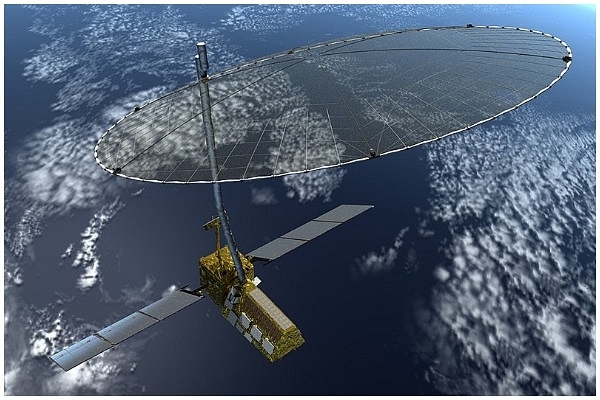News Brief
Building World's Most Expensive Imaging Satellite: ISRO Ships Key Component Of NISAR To NASA

Image from Wikipedia. Artist’s concept of the NASA-ISRO Synthetic Aperture Radar (NISAR) satellite in orbit.
The Indian Space Research Organisation (ISRO) has shipped the S-band Synthetic Aperture Radar (SAR) to the National Aeronautics and Space Administration (NASA) as part of the Indo-US joint initiative to develop the world’s first earth observation satellite that will have two separate radars to produce high-resolution images.
On 4 March, the S-band SAR was virtually flagged off from ISRO’s Space Application Centre in Ahmedabad to the Jet Propulsion Laboratory of the NASA in California’s Pasendana.
The NASA will now integrate this S-band with the L-band payload which it is building. Upon the completion of the integration process of the two radars, the NASA will send it back to India. The remaining parts of the NASA-ISRO SAR (NISAR) satellite will be built domestically and the ISRO will subsequently utilise the GSLV Mk-II rocket to launch NISAR from the Sriharikota launchpad.
This will be the world’s first satellite to operate on two radio frequencies. It will be capable to collect data 24x7 in all weathers conditions. NISAR is also set to measure the changes in earth’s surface less than a centimetre across. It will help in studying dynamic surfaces, the rise in sea-level, the groundwater levels along with ice masses such as the Himalayan glaciers.
“Its data can help people worldwide better manage natural resources and hazards like earthquakes, tsunamis, volcanoes and landslides, as well as provide information to better understand the effects and pace of climate change. It will also add to our understanding of the planet’s hard outer layer (crust),” NASA was quoted by the Times of India.
The agency added, “As the mission continues for years, the data will allow for better understanding of the causes and consequences of land surface changes, increasing our ability to manage resources and prepare for and cope with global change.”
NISAR is slated to be the world’s most expensive imaging satellite with ISRO contributing Rs 788 crore and NASA investing Rs 5,890 crore in the project.
According to the agreement, the ISRO is in-charge of arranging the spacecraft bus, the launch vehicle (GSLV), S-band radar and the associated launch services for this mission. On the other hand, NASA is providing the satellite mission’s L-band SAR, a high-rate communication subsystem for science data, a solid-state recorder, payload data subsystem and GPS receivers for the initiative.
ISRO Chairman K Sivan told TOI that the complete satellite will be ready by late 2022 and they will target to launch it by early-2023.
Introducing ElectionsHQ + 50 Ground Reports Project
The 2024 elections might seem easy to guess, but there are some important questions that shouldn't be missed.
Do freebies still sway voters? Do people prioritise infrastructure when voting? How will Punjab vote?
The answers to these questions provide great insights into where we, as a country, are headed in the years to come.
Swarajya is starting a project with an aim to do 50 solid ground stories and a smart commentary service on WhatsApp, a one-of-a-kind. We'd love your support during this election season.
Click below to contribute.
Latest